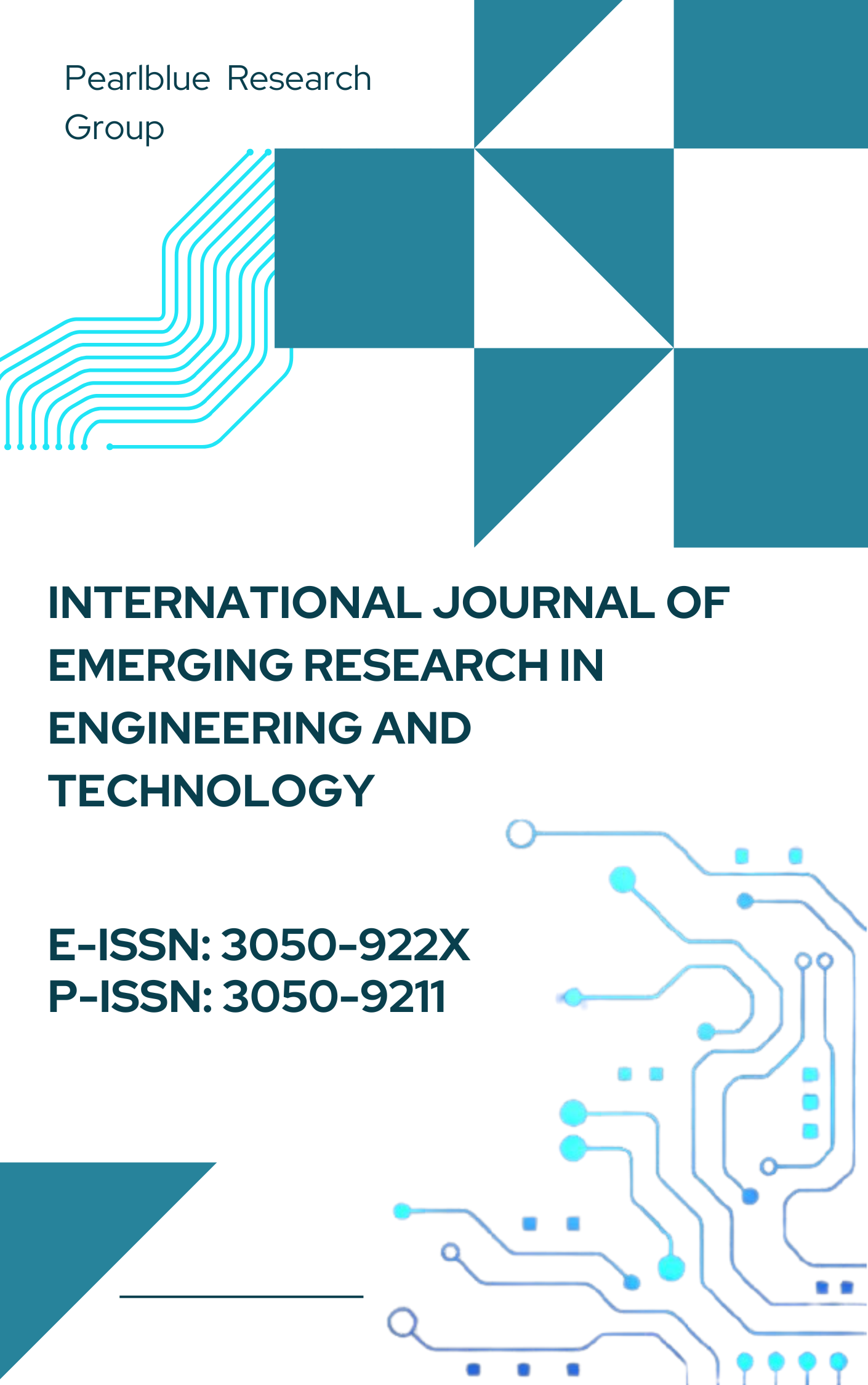Balancing Speed and Safety: CI/CD in the World of Healthcare
DOI:
https://doi.org/10.63282/3050-922X.IJERET-V1I3P104Keywords:
CI/CD, healthcare, continuous integration, continuous delivery, patient safety, software development, healthcare technology, regulatory compliance, data security, DevOps, healthcare IT, automation, software testing, deployment pipelines, healthcare innovationAbstract
In the rapidly evolving landscape of healthcare technology, the need to balance speed and safety has never been more critical. Continuous Integration and Continuous Deployment (CI/CD) pipelines have become the backbone of modern software development, enabling teams to deliver updates and new features at an unprecedented pace. However, in the context of healthcare, where the stakes are extraordinarily high, the adoption of CI/CD must be carefully managed to ensure that innovation does not come at the expense of patient safety. This article explores the delicate equilibrium between accelerating development cycles and maintaining rigorous safety standards in healthcare software. It delves into the unique challenges faced by healthcare organizations as they implement CI/CD practices, such as managing regulatory compliance, ensuring data privacy, and minimizing the risk of system failures that could impact patient care. Through real-world examples and expert insights, we examine how healthcare teams can leverage CI/CD to enhance efficiency without compromising the quality and safety of their applications. By embracing a culture of collaboration, continuous testing, and vigilant monitoring, healthcare organizations can successfully navigate the complex intersection of speed and safety, ensuring that their technological advancements contribute positively to patient outcomes while maintaining the trust and reliability that the industry demands
References
[1] Helder, J. H. (2019). Improving communication in the Dutch multi-agency emergency healthcare: Applying Enterprise Integration Patterns to cross communication barriers (Master's thesis).
[2] Mullangi, K., Anumandla, S. K. R., Maddula, S. S., Vennapusa, S. C. R., & Mohammed, M. A. (2018). Accelerated Testing Methods for Ensuring Secure and Efficient Payment Processing Systems. ABC Research Alert, 6(3), 202-213.
[3] Vehent, J. (2018). Securing DevOps: security in the cloud. Simon and Schuster.
[4] Sachdeva, R. (2016). Automated testing in DevOps. In Proc. Pacific Northwest Software Quality Conference.
[5] Halling, M. L., Kjeldsen, J., Knudsen, T., Nielsen, J., & Hansen, L. K. (2017). Patients with inflammatory bowel disease have increased risk of autoimmune and inflammatory diseases. World journal of gastroenterology, 23(33), 6137.
[6] Buzachis, A., Bernava, G. M., Busa, M., Pioggia, G., & Villari, M. (2018, October). Towards the basic principles of osmotic computing: a closed-loop gamified cognitive rehabilitation flow model. In 2018 IEEE 4th International Conference on Collaboration and Internet Computing (CIC) (pp. 446-452). IEEE.
[7] Herrinton, L. J., Liu, L., Lafata, J. E., Allison, J. E., Andrade, S. E., Korner, E. J., ... & O'Connor, S. (2007). Estimation of the period prevalence of inflammatory bowel disease among nine health plans using computerized diagnoses and outpatient pharmacy dispensings. Inflammatory bowel diseases, 13(4), 451-461.
[8] Hukins, G. B. A. (2012). Strategic Management for Cost Efficient Health Care in the Steelmed Medical Aid. University of Johannesburg (South Africa).
[9] Charlton, J. R., & Velez, R. (1986). Some international comparisons of mortality amenable to medical intervention. Br Med J (Clin Res Ed), 292(6516), 295-301.
[10] Arora, A., Nethi, A., Kharat, P., Verghese, V., Jenkins, G., Miff, S., ... & Wang, X. (2019). Isthmus: secure, scalable, real-time and robust machine learning platform for healthcare. arXiv preprint arXiv:1909.13343.
[11] Lin, X., Lofland, J., Zhang, L., Lee, K., Sloan, S., Chamaa, L., ... & Plevy, S. (2018). P715 opioid use in patients with inflammatory bowel disease. Journal of Crohn's and Colitis, 12(supplement_1), S473-S473.
[12] Buzachis, A., Bernava, G. M., Busà, M., Pioggia, G., & Villari, M. (2018, June). Towards osmotic computing: Future prospect for the health information technology (HIT) systems of ISASI-CNR (ME). In 2018 IEEE Symposium on Computers and Communications (ISCC) (pp. 01255-01260). IEEE.
[13] Sharma, V., & Gupta, N. (2015). Systematic literature review of quality management in healthcare organisations: exploring and organising extant research using nVivo. International Journal of Services and Standards, 10(1-2), 2-16.
[14] Sridhar, A. R. M., Parasa, S., Navaneethan, U., Crowell, M. D., & Olden, K. (2011). Comprehensive study of cardiovascular morbidity in hospitalized inflammatory bowel disease patients. Journal of Crohn's and Colitis, 5(4), 287-294.
[15] Shekhar, S. (2016). A CRITICAL EXAMINATION OF CROSS-INDUSTRY PROJECT MANAGEMENT INNOVATIONS AND THEIR TRANSFERABILITY FOR IMPROVING IT PROJECT DELIVERABLES. Quarterly Journal of Emerging Technologies and Innovations, 1(1), 1-18.



